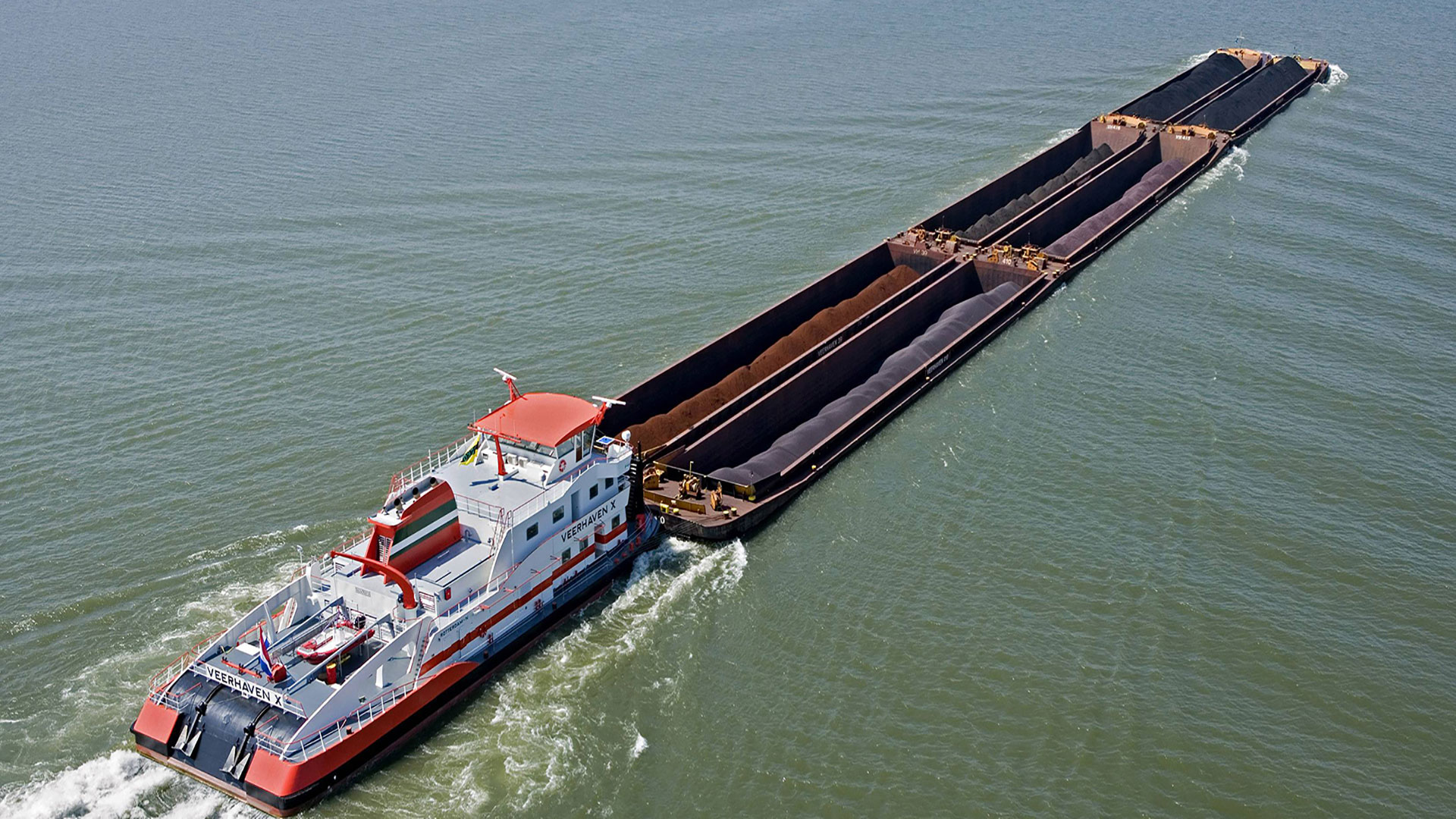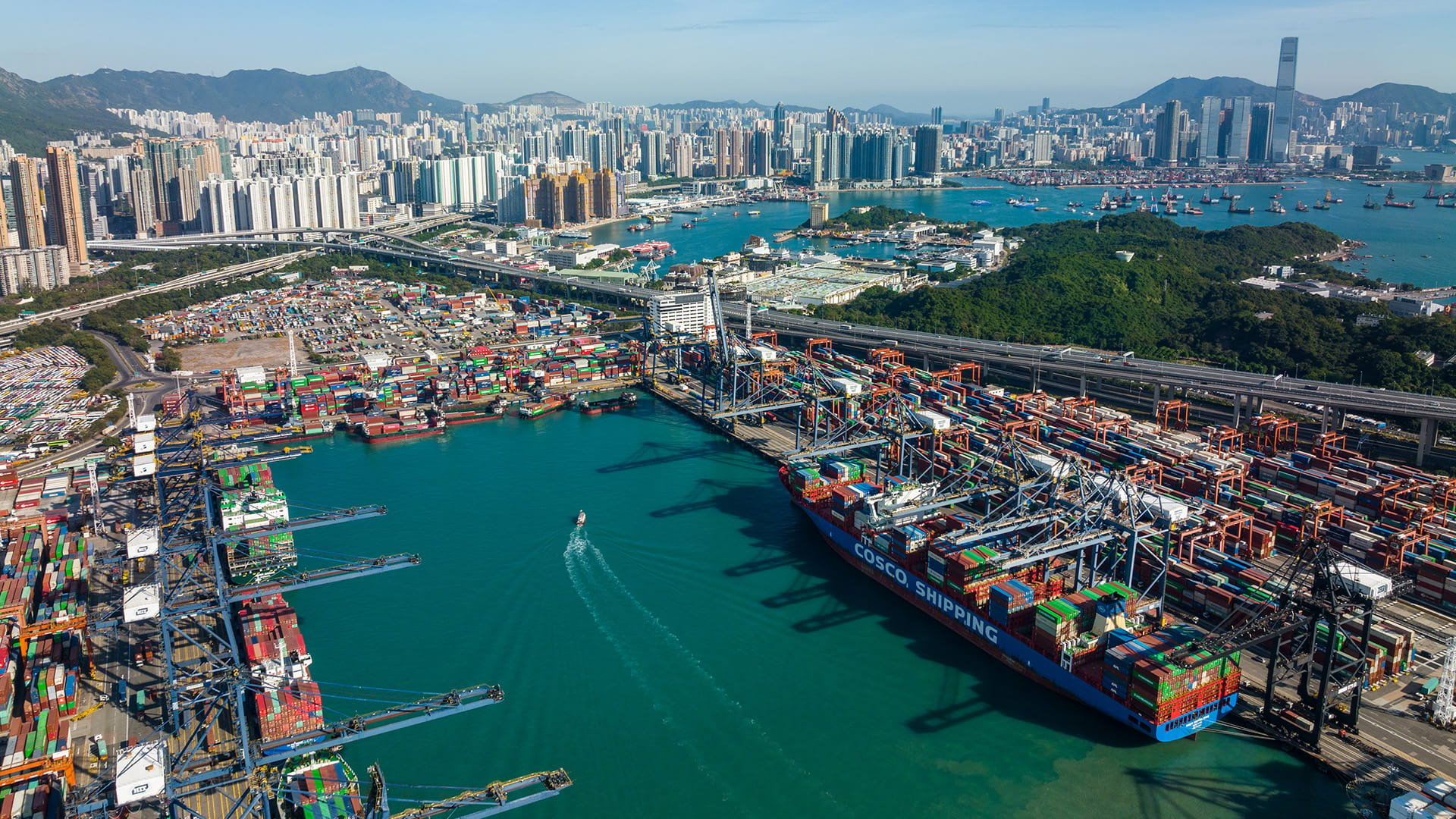Is climate change altering trade routes around the world?

Author: Hans Vermij, Leading Professional Maritime
We must prepare for a warmer world with more extreme weather events. This is the sad conclusion of COP27, as the 1.5⁰C ceiling of the Paris Agreement on global warming seems unattainable. This will have ramifications for all of us, including potentially disrupting and in some cases opening new international trade routes.
Drought has affected inland waterways in Europe for decades, although in recent years its impact on river transport has worsened. Last summer, low water levels in parts of the Rhine greatly reduced the amount of cargo carried due to draft restrictions.
This is a big problem, especially for countries like Germany, which import almost a third of coal, crude oil, natural gas and 11% of chemicals along the river1. River traffic accounts for 80% of the traffic. while the economies of the Netherlands, Belgium, France, Switzerland and Eastern Europe also benefit greatly from the domestic lifeline serving this network of canals.
The middle of the Rhine is the worst affected part. The problem comes when the water level drops below the official low water level of 78 cm. Below, the weight of the goods that can be transported is limited. According to an article by the Kiel Institute for the World Economy2, "In a month with 30 days of low water, industrial production in Germany declines by about 1%".
Adaptation strategies have included barges with shallower drafts and specially designed propellers capable of navigating poor waters. A more permanent solution is to canalize this part, but that comes at a hefty price. The IJsselmeer - the 1,100 square kilometre lake created when the Zuiderzee was closed to the sea - could serve as a giant lake to feed such a canal. But competition from agriculture and concerns about loss of biodiversity and natural habitat could hinder this plan.
Another promising solution is to deepen the Rhine at known bottlenecks. Several innovative solutions are being tested, such as raising the river floor by sinking concrete sills on the riverbed.
While we do not know if all these measures will work, we do know that the disappearance of river transport will only exacerbate the problem of climate change in Europe because barges create much less carbon than road transport. However, as summers become ever warmer, logistics operations need to measure costs and risks and have contingency plans in place. Multimodal transport options around black spots could become the new normal and in the worst case, industries could be forced to relocate.
Plain sailing
In anticipation of global warming, the retreat of Arctic Sea ice will soon make the Northwest Passage navigable for shipping. The route cuts seven days from the current 23 to travel from the east coast of North America to the Bering Strait via the North Sea Route that runs along Russia.
Of course, shorter routes are generally good for the environment because ships use less fuel. This helps reduce operating costs and hopefully translates into lower prices.
Switching to zero-emission fuels, such as hydrogen, will also open new shipping routes. At COP27, the UK, US, Norway and the Netherlands committed to the implementation of ‘green shipping corridors,’ describing them as “maritime routes decarbonised from end to end.” Establishing such routes involves investments in refuelling and reloading infrastructure at ports and the deployment of zero-emission vessels.
Environmental regulations, increased efficiency and the need to ward off competition from rival ports are already transforming ports around the world. The future belongs to Green Ports, which promote green and sustainable operations in all aspects of their operations, and Smart Ports, which use digital infrastructure to improve critical and operational efficiency.
Stormy weather ahead
But all is not smooth sailing. Many of the world's 3,700 ports will have to adapt to sea-level rise, while others may be revived with ports that were once too shallow.
Perhaps the greatest climate threat to trade routes comes from storms with increased wind speed, wave height and precipitation. Weather caused at least 80 of the 400 ships lost between 2015 and 20193, and the rate of Category 3 to 5 cyclones has increased by about 5% per decade since 19794. In response, ship designs have modified to make the ship more resilient, and the weather monitoring system has been reinforced.
Storm surges interfere with loading and unloading of cargo, causing increased bunker consumption and longer travel times.
Even if ports are bullet-proof, their operations can still be affected by storm-damaged inland infrastructure. In 2003, Busan, Korea's second largest city, was closed for 91 days by Typhoon Maemi. Although the port was repaired relatively quickly, its operations were severely disrupted by damaged inland roads and bridges – a fitting illustration of the inter-related consequences of climate change.
However, when companies assess risk from disasters, they primarily focus on disasters such as floods or hurricanes and only do so for the most critical facilities or parts of the supply chain. This is not enough in these uncertain times, given the complexity of our society and economy.
Everything is connected
The reality is that climate change is changing conditions everywhere. Its inter-connected, often cascading effects must be well understood. For example, a severe drought in Argentina resulted in lower harvests, causing a broader economic impact. As cash-strapped farmers tighten their belts, sales of heavy equipment, cars and washing machines plummet. Elsewhere on the continent, drought reduces water availability in reservoirs, limiting energy production.
It is therefore important that, as weather conditions change, we assess a range of natural hazards and their direct impact not only on businesses but also on suppliers and customers.
The same causality applies to trade routes. Drought impacts river levels, reducing loading capacity, affecting the transportation of base materials or finished products. The result is a drop in economic output and unhappy investors.
Ship owners, logistics companies, port operators and insurers need to be aware of the consequences of a 2-2.3⁰C temperature rise on their business as they move to low or zero-emission fuels. They cannot know everything. Guidance on clean fuel, smart technology and flexible port operation is key.
Finally, a broader risk assessment, which considers a multitude of complex interdependencies, must become the norm. It should be at the heart of logistics and business planning, as it remains the best path to building climate resilience and reducing investment risk in an increasingly uncertain world.
Hans Vermij is a leading expert in Port hinterland logistics with 37 years of experience. Educated as a transport economist and regional development expert, Hans has worked in more than 22 countries in Europe, the Middle East, Africa and Asia. He is responsible for the execution of inland water development projects and as internationally recognised expert, he regularly lectures and trains port and zone directors on Economic Zone development and Port Master planning, including Free Zones.
This article was published by International Trade Magazine on 19 January 2023.
Related markets
Footnotes
1, 2 Kiel Institute for the World Economy, 2020.3 Bloomberg https://www.bloomberg.com/news/articles/2022-03-14/the-world-s-cargo-ships-are-sailing-into-worse-climate-risks
4 The High Meadows Environmental Institute https://environment.princeton.edu/news/intensity-of-tropical-cyclones-is-probably-increasing-due-to-climate-change/


